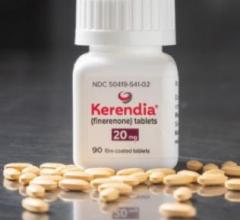
Getty Images
February 14, 2023 — A large international clinical study finds that patients with large strokes had a dramatically better recovery after endovascular thrombectomy plus medical management than patients receiving only standard medical management.
Endovascular thrombectomy is mechanical recovery of a clot blocking blood flow in an artery.
The study was published Feb. 10 in the New England Journal of Medicine to coincide with its presentation at the International Stroke Conference in Dallas.
The SELECT2 study, which involved 31 medical centers in North America, Europe, Australia, and New Zealand, was stopped early because of the successful results seen in patients who received thrombectomy versus medication only.
Global Principal Investigator and Lead Author of the study, Amrou Sarraj, MD, said, “We went on to challenge the current practice where patients with large strokes would be precluded from thrombectomy.” Dr. Sarraj is the Stroke Center and System Director, the George M. Humphrey II Chair in Neurology at University Hospitals, and Professor of Neurology at Case Western Reserve University School of Medicine.
While thrombectomy has proven effective in smaller strokes, patients with large strokes were considered too high risk for the procedure. Size of a stroke is determined by range of damaged brain tissue seen through CT or MRI scans.
“These patients are left to receive medical management only, and a significant number of them end up with very poor outcomes; being wheelchair bound, bed ridden, or dead,” said Dr. Sarraj. “This is a huge opportunity for improvement at a very large level, especially since these patients account for 20 to 25 percent of all large vessel occlusions and may have huge impact on patients, their family, and society.”
The study had a target of 560 patients with large artery occlusion causing a large stroke on CT or advanced imaging, but the data and safety monitoring board stopped the trial after enrollment of 352 patients because of the superior outcomes seen with thrombectomy.
The patients were randomly assigned to one of two groups: 178 received thrombectomy and 174 received medical management. Patients who were seen prior to 4.5 hours from onset of stroke received clot-buster drugs TPA or TNKase if eligible.
“We found that almost 20 percent of the patients who received a thrombectomy ended up with functional independence, going back to their family, to the society as almost normal or not needing support, compared to 7 percent for medical treatment only. We also found that almost 40 percent of the patients end up ambulating independently.” said Dr. Sarraj,
“This is a huge improvement in these patients with large strokes who are not being offered the treatment at this point.”
Dr. Sarraj expects the results to change treatment guidelines in the near future. “This will give a large number of patients the opportunity for a chance for improvement,” he said.
Cathy Sila, MD, Chair of Neurology and the Gilbert W. Humphrey Professor of Neurology at UH and Professor of Neurology at Case Western Reserve, said, “The results of the SELECT2 trial represent another major advancement in acute stroke therapy and brings hope for meaningful recovery to an additional subgroup of patients who previously would have been thought not to benefit. The success of SELECT2 trial is a testament to the dedication and perseverance of Dr. Sarraj, the UH stroke team, and his collaborating coinvestigators across the world. We are proud to be leading the charge towards a brighter future for patients and their families affected by stroke.”
“The Neurological Institute at UH is a leader in clinical trials involving patients with stroke. This study led by our researchers will dramatically improve the treatment of patients not just in Northeast Ohio but worldwide," said Nicholas Bambakidis, MD, Vice President and Director of the UH Neurological Institute, Chair of the Department of Neurosurgery, and holder of the Harvey Huntington Brown, Jr., Chair in Neurosurgery. He is also Professor of Neurological surgery at Case Western Reserve.
“Conducting a trial at this level is not an easy task,” Dr. Sarraj added. “First and foremost, I thank our patients and their families for their noble contributions to the trial, my co-investigators worldwide, my research team that was the heart and soul of the trial and University Hospitals which hosted the trial as the global coordinating center in the last two years since I came here.”
Grace A McComsey, MD, Vice President of Research, Associate Chief Scientific Officer and Director, Clinical Research Center at UH, said, “Research and innovation are vital to our UH mission. This is yet another great example of how well designed clinical trials can challenge the current knowledge to improve life expectancy and quality of life. I am proud of our team, led by Dr. Sarraj, that scientifically challenged the status quo and showed promise in a devastating condition like stroke.” Dr. McComsey holds the Rainbow Babies & Children's Foundation John Kennell Chair of Excellence in Pediatrics.
The trial was funded through a grant from Stryker Neurovascular to the University Hospitals Cleveland Medical Center and University of Texas Houston McGovern Medical School.
For more information: www.uhhospitals.org


 October 28, 2025
October 28, 2025 









